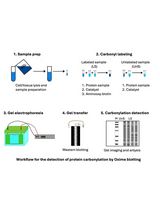- EN - English
- CN - 中文
GC/MS-based Analysis of Volatile Metabolic Profile Along in vitro Differentiation of Human Induced Pluripotent Stem Cells
基于GC/MS的人诱导多能干细胞体外分化过程中挥发性化合物代谢谱分析
(*contributed equally to this work) 发布: 2017年12月05日第7卷第23期 DOI: 10.21769/BioProtoc.2642 浏览次数: 11240
评审: Neelanjan BoseAnonymous reviewer(s)

相关实验方案
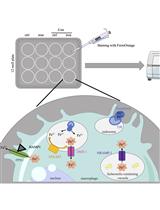
在平板检测仪中使用高特异性荧光探针定量巨噬细胞细胞二价铁 (Fe2+) 含量
Philipp Grubwieser [...] Christa Pfeifhofer-Obermair
2024年02月05日 2161 阅读
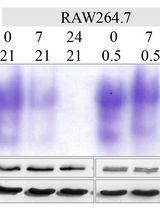
哺乳动物线粒体和胞质顺乌头酸酶的凝胶内活性测定——分区特异性氧化应激与铁状态的替代标志物
Wing-Hang Tong and Tracey A. Rouault
2024年12月05日 2119 阅读
Abstract
Human induced pluripotent stem cells (hiPSCs) are a promising tool in cell-based therapies for degenerative diseases. A safe application of hiPSCs in vivo, requires the detection of the presence of residual undifferentiated pluripotent cells that can potentially cause the insurgence of teratomas. Several studies point out that metabolic products may provide an alternative method to identify the different steps of cells differentiation. In particular, the analysis of volatile organic compounds (VOCs) is gaining a growing interest in this context, thanks to its inherent noninvasiveness. Here, a protocol for VOCs analysis from human induced pluripotent stem cells (hiPSCs) is illustrated. It is based on Solid-Phase Microextraction (SPME) technique coupled with gas chromatography-mass spectrometry (GC/MS). The method is applied to measure the volatile metabolite modifications in cells headspace during cell reprogramming from chorionic villus samples (CVS) to hiPSCs, and along hiPSCs in vitro differentiation into early neural progenitors (NPs), passing through embryoid bodies (EBs) formation.
Keywords: Gas chromatography-mass spectrometry (气相色谱 - 质谱法)Background
Cellular metabolism is proposed as an alternative to studying stem cells during the various steps of differentiation. Indeed, it is reasonable to suppose that the transition of stem cells from pluripotency to the complete differentiation, might give rise to a dramatic change of metabolic products. First evidence of this assumption was observed between induced pluripotent stem cells, parental fibroblasts, and embryonic stem cells (Meissen et al., 2012).
Within the metabolic products, the volatile organic compounds (VOCs) are attracting interest for the supposed simplicity of their collection, the intrinsic non-invasiveness and the wide availability of the analysis methods (Boots et al., 2015). To this regard, several studies show that the headspace of cancer cells exhibit a VOCs profile which is altered as compared to that of normal cells (Sponring et al., 2010; Peled et al., 2013; Filipiak et al., 2016).
Recently, we investigated the VOCs profiles of hiPSCs along the successive steps of differentiation (Capuano et al., 2017). Results support the hypothesis that the volatile fraction of the metabolic profile changes along the differentiation process as a reflection of the dramatic variations occurring in the cells.
GC/MS analysis evidences a number of compounds whose relative abundance can signal the difference between the various phases of the differentiation. Most of these compounds are aldehydes, alcohols, and alkanes. It is worth to remark that these compounds are detected because of their affinity with the chosen SPME and the GC/MS column. As a consequence, at this stage, it cannot be excluded that additional and even more discriminating volatile compounds might be found using different experimental setups. However, the outlined protocol is thoroughly valid even when different materials for SPME and GC/MS columns are selected. In other words, the protocol to sample volatile compounds from cell cultures and to analyze them with GC/MS is valid in general. Albeit, changes in the materials of the SPME fiber and the column modify the sensitivity respect to volatile compounds, then the use of different materials may highlight the presence of some classes of compounds and hinder the detection of others.
Materials and Reagents
- 60 mm tissue-culture sterile dish (Corning, Falcon®, catalog number: 353004 )
- 25-cm2 tissue-culture sterile flask (Corning, catalog number: 430639 )
- 35 mm tissue-culture sterile dish (Corning, Falcon®, catalog number: 353001 )
- Sterile cell scraper (Corning, Falcon®, catalog number: 353086 )
- 15-ml conical sterile tubes (Corning, Falcon, catalog number: 352096 )
- 50-ml conical sterile tubes (Corning, Falcon, catalog number: 352070 )
- 4-well tissue-culture sterile plates (Thermo Fisher Scientific, Thermo ScientificTM, catalog number: 176740 )
- 6-well tissue-culture sterile plates (Thermo Fisher Scientific, Thermo ScientificTM, catalog number: 140675 )
- 100 mm tissue-culture sterile dish (Corning, Falcon®, catalog number: 353003 )
- 60 mm ultra-low attachment culture sterile dishes (Corning, catalog number: 3261 )
- 5-ml plastic disposable sterile pipette (SARSTEDT, catalog number: 86.1253.001 )
- 10-ml plastic disposable sterile pipette (SARSTEDT, catalog number: 86.1254.001 )
- 25-ml plastic disposable sterile pipette (SARSTEDT, catalog number: 86.1685.001 )
- 0.22 µm sterile filter system (Corning, catalog number: 431097 )
- Sterile glass Pasteur pipettes (VWR, catalog number: HECH40567001)
Manufacturer: Glaswarenfabrik Karl Hecht, catalog number: 40567001 . - Sterile CryoTube Vials (Thermo Fisher Scientific, Thermo ScientificTM, catalog number: 375418 )
- 50/30 μm Divinylbenzene/Carboxen/PDMS (DVB/CAR/PDMS) SPME fiber assembly, needle size 24 ga, for use with manual holder (Sigma-Aldrich, catalog number: 57328-U )
- SPME Fiber Holder for use with manual sampling (Sigma-Aldrich, catalog number: 57330-U )
- Customized lids in polymethylmethacrylate (PMMA) for 60 mm tissue-culture dish (50 mm i.d x 60 mm h) having a suitable support for Solid Phase Micro-Extraction fiber insertion (1 mm i.d. x 40 mm h) (Figure 1). This system is made of three parts: a) the lid; b) the SPME fiber support and c) Shimadzu GC septa (Shimadzu, catalog number: 201-35584 ). Details are shown in Figure 2
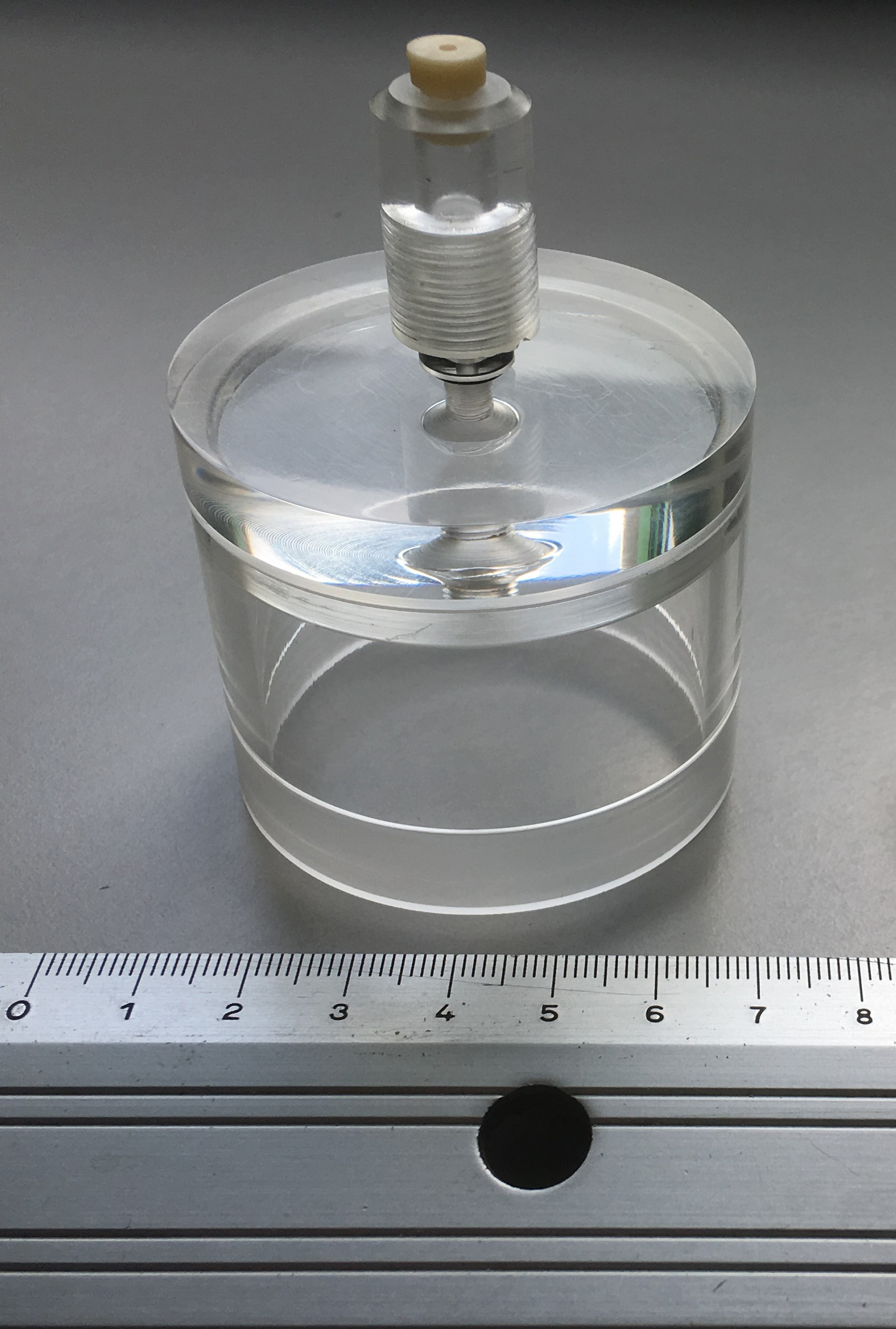
Figure 1. Customized lid in polymethylmethacrylate (PMMA). This system is suitable for headspace creation above 60 mm tissue-culture dishes and it is equipped with a support for Solid Phase Micro-Extraction fiber insertion to allow headspace VOC sampling.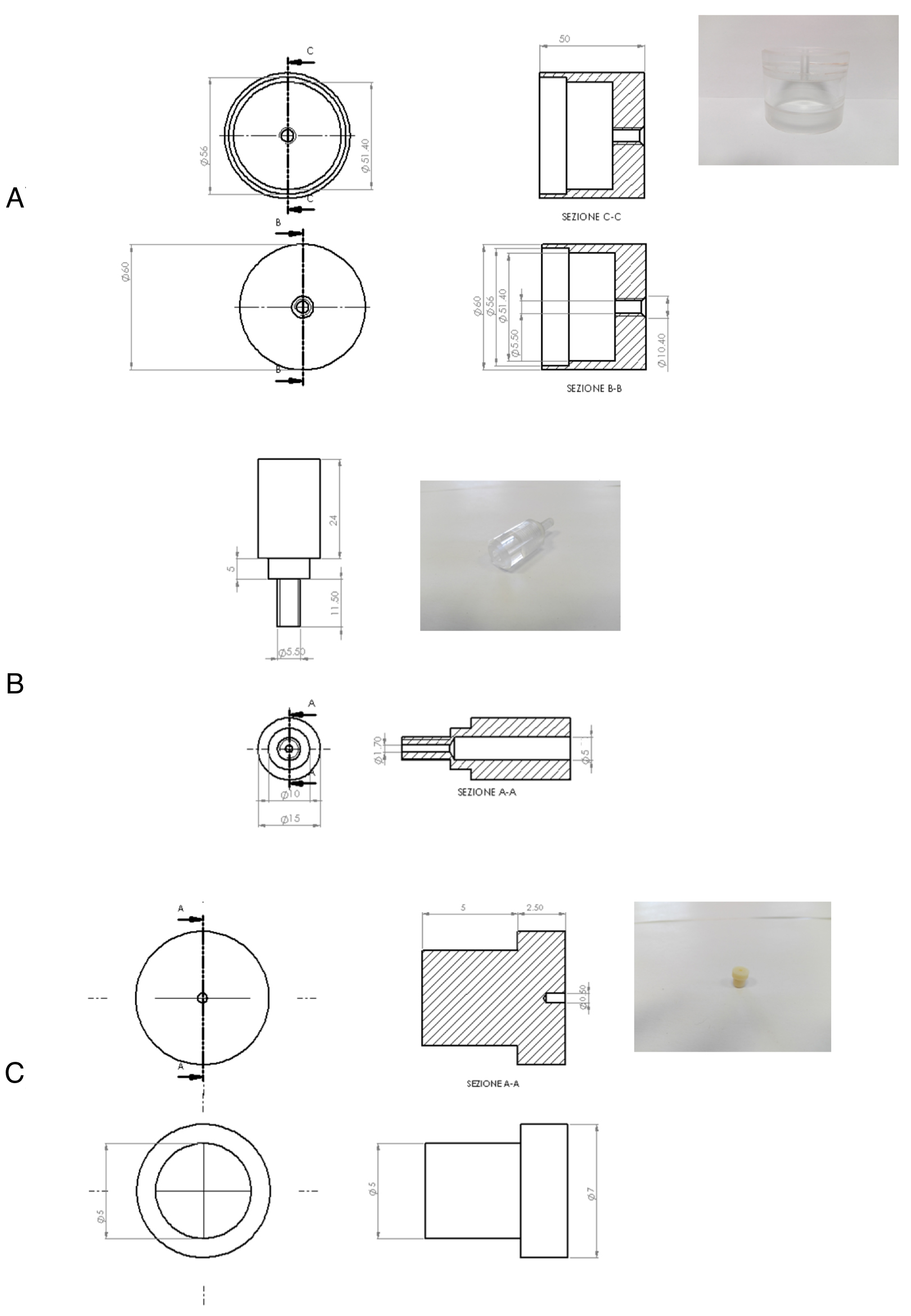
Figure 2. Details of the PMMA customized lid. A. The lid; B. The SPME fiber support; C. the Shimadzu GC septa (Shimadzu). - Gelatin from porcine skin, Type A (Sigma-Aldrich, catalog number: G1890 )
- Dulbecco’s phosphate buffered saline (D-PBS) (Mediatech, catalog number: 21-031-CV )
- Collagenase type XI (Sigma-Aldrich, catalog number: C7657 )
- 0.25% trypsin-EDTA (Thermo Fisher Scientific, GibcoTM, catalog number: 25200056 )
- Trypsin-EDTA (CARLO ERBA Reagents, catalog number: FA30WL0940100 )
- Collagenase type IV (Sigma-Aldrich, catalog number: C5138 )
- Accutase (Merck, catalog number: SCR005 )
- Poly-L-ornithine solution (Sigma-Aldrich, catalog number: P4957 )
- 2-Ethyl-1-Hexanol (Sigma-Aldrich, catalog number: 08607 )
- Styrene (Sigma-Aldrich, catalog number: 45993 )
- Hexanal (Sigma-Aldrich, catalog number: 18109 )
- 3-Hexen-1-ol, propanoate, (Z)- (Sigma-Aldrich, catalog number: W393304 )
- Acetone (Sigma-Aldrich, catalog number: 48358 )
- o-Cymene (In NIST 127 and NIST 147 mass spectral libraries it appears with the alternative name: Benzene, 1-methyl-2-(1-methylethyl)-) (Sigma-Aldrich, catalog number: 255270 )
- 1,4-Cyclohexadiene, 1-methyl-4-(1-methylethyl)- (Sigma-Aldrich, catalog number: 86476 )
- Propanoic acid, 2-hydroxy-2-methyl-, ethyl ester (Sigma-Aldrich, catalog number: E31200 )
- Nonanal (Sigma-Aldrich, catalog number: 442719 )
- Vinyl butyrate (Sigma-Aldrich, catalog number: 19390 )
- Tridecane (Sigma-Aldrich, catalog number: 442713 )
- Decanal (Sigma-Aldrich, catalog number: 59581 )
- Propanoic acid, 2-methyl-, anhydride (Sigma-Aldrich, catalog number: 245771 )
- Butanoic acid, 2-methylpropyl ester (Sigma-Aldrich, catalog number: 94888 )
- Hexadecane (Sigma-Aldrich, catalog number: 442679 )
- Methanone, (4-aminophenyl)phenyl- (Sigma-Aldrich, catalog number: A41402 )
- Heptadecane (Sigma-Aldrich, catalog number: 51578 )
- 3,5-Dimethyl-4-octanone (Sigma-Aldrich, catalog number: S504696 )
- Butanoic acid, anhydride (Sigma-Aldrich, catalog number: 19270 )
- Mouse Laminin (Merck, catalog number: CC095 )
- CHANG MEDIUM C Lyophilized (Irvine Scientific, catalog number: T101-019 )
- Fetal bovine serum (FBS) (Thermo Fisher Scientific, GibcoTM, catalog number: 10270 )
- Penicillin-streptomycin solution (CARLO ERBA Reagents, catalog number: FA30WL0022100 )
- L-Glutamine (CARLO ERBA Reagents, catalog number: FA30WX0550100 )
- Dulbecco’s modified Eagle’s medium–high glucose (DMEM) (Sigma-Aldrich, catalog number: D5671 )
- DMEM/F-12 1:1 (Sigma-Aldrich, catalog number: D6421 )
- Knockout SR Serum replacement (KOSR) (Thermo Fisher Scientific, GibcoTM, catalog number: 10828028 )
- MEM non essential amino acids (Thermo Fisher Scientific, GibcoTM, catalog number: 11140050 )
- 2-Mercaptoethanol (Thermo Fisher Scientific, GibcoTM, catalog number: 31350010 )
- Basic fibroblast growth factor (bFGF) (Thermo Fisher Scientific, GibcoTM, catalog number: PHG6015 )
- Retinoic acid (Sigma-Aldrich, catalog number: R2625 )
- Hedgehog pathway activator (Hh-Ag1.3) (Curis, Lexington, MA)
- Human BDNF (PeproTech, catalog number: 450-02 )
- Recombinant Human CNTF (PeproTech, catalog number: 450-13 )
- Human GDNF (PeproTech, catalog number: 450-10 )
- Chang medium (CVS medium) (see Recipes)
- MEF medium (see Recipes)
- hiPS cell medium (see Recipes)
- EB medium 1 (see Recipes)
- EB medium 2 (see Recipes)
Equipment
- CO2 incubator (37 °C) (Thermo Fisher Scientific, Thermo ScientificTM, model: HeracellTM 150i )
- Inverted microscope (Nikon Instruments, model: Eclipse TE2000-S )
- Pipettes (20 µl, 200 µl and 1000 µl) (Gilson, catalog number: F167300 )
- Centrifuge (provided with TX-200 swinging bucket rotor (Thermo Fisher Scientific, Thermo ScientificTM, catalog number: 75003658 ) containing round buckets (Thermo Fisher Scientific, Thermo ScientificTM, catalog number: 75003659 ) suitable to process up to 20 x 15 ml conical tubes. Flexible capacity with adapters ranging from 15 to 50 ml. Maximum speed 5,500 rpm) (Thermo Fisher Scientific, Thermo ScientificTM, model: HeraeusTM MultifugeTM X1 , catalog number: 75004210)
- Herasafe KS, Class II biological safety cabinet with UV surface disinfection irradiator (Thermo Fisher Scientific, Thermo ScientificTM, model: HerasafeTM KS , Class II, catalog number: 51022481)
- Zoom stereomicroscope (Nikon Instruments, model: SMZ100 )
- Gas chromatography-mass spectrometry (GC/MS) system (Shimadzu, model: GCMS-QP2010 )
- SPME liner for SPL injector, special SPME liner, without filling, Phenylmethyl-deactivated deactivated (Shimadzu, catalog number: 961-01482-01 )
- Equity-5 capillary column (poly(5% diphenyl/95% dimethyl siloxane) phase; 30 m length x 0.25 mm i.d.; film thickness: 0.25 μm) (Sigma-Aldrich, catalog number: 28089-U )
- Ultra-high purity helium (99.999%)
Software
- GCMS solution (version 2.4, Shimadzu Corporation)
- NIST 127 and NIST 147 mass spectral libraries (National Institute of Standards and Technology-http://www.nist.gov/)
- MATLAB® (version R2016 b, MathWorks)
Procedure
文章信息
版权信息
© 2017 The Authors; exclusive licensee Bio-protocol LLC.
如何引用
Capuano, R., Talarico, R. V., Spitalieri, P., Roberto, P., Giuseppe, N., Sangiuolo, F. and Di Natale, C. (2017). GC/MS-based Analysis of Volatile Metabolic Profile Along in vitro Differentiation of Human Induced Pluripotent Stem Cells. Bio-protocol 7(23): e2642. DOI: 10.21769/BioProtoc.2642.
分类
干细胞 > 多能干细胞 > 细胞诱导
细胞生物学 > 细胞新陈代谢 > 其它化合物
您对这篇实验方法有问题吗?
在此处发布您的问题,我们将邀请本文作者来回答。同时,我们会将您的问题发布到Bio-protocol Exchange,以便寻求社区成员的帮助。
Share
Bluesky
X
Copy link












